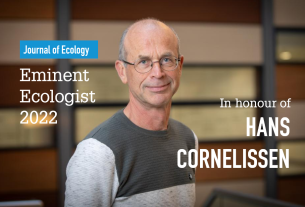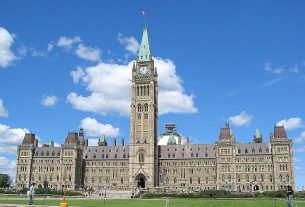[ad_1]
We’re delighted to announce that Sarah Dalrymple has been appointed as a new Senior Editor for the Biological Flora at Journal of Ecology, to work alongside Anthony Davy. Sarah has worked on Biological Flora accounts for a number of years as an Associate Editor, and we’re excited to welcome her to the new role!
Sarah, can you tell us a bit about the Biological Flora series?
For those that aren’t familiar with the series, the Biological Flora is a unique collection of papers, each one on a different plant species but using the same structure each time. The articles cover the autecology of the species so everything from distribution and community interactions to genetics and conservation. The first account was published in 1942 and we now have >300 accounts so it’s an unparalleled and valuable reference for primary researchers, and we’re hoping that we can increase the applied use of the series as well.
Tell us a bit about your research to date:
My research focusses on conservation translocations including reintroductions and assisted migration. During my PhD at the University of Aberdeen, I undertook a reintroduction of a threatened plant and realised that there were many issues with using reintroductions for species recovery. A key problem was that very few people were looking at the impact of climate change on the indigenous range of threatened species and my research since then has used a mixture of fieldwork, computer modelling and meta-analysis to define that impact. With my former PhD student and collaborator, Joe Bellis, we’ve shown that many failed reintroductions are associated with poor climate suitability, and predict that many more will succumb to deteriorating climate conditions in the future.
What can you tell us about the first paper you published?:
Well, I’m glad you asked (!) because it was a Biological Flora account of Melampyrum sylvaticum or small cow-wheat. It was the focus of my PhD and in pulling together all the literature, my supervisor, Sarah Woodin, suggested that I use the same structure as the Biological Flora papers. Once my PhD was done, I supplemented the literature with some of my own data and published the account in 2007. It was great to get my first paper in the Journal of Ecology.
What’s your favorite species and why?:
Just one??? My favourite is technically a genus – Melampyrum – because I’ve been working on them for over twenty years. They have an unusual ecological strategy being annual facultative root hemiparasites that has ant-dispersed seeds, and are insect-pollinated, and host their own fungi, and have a shield bug named after them and… I could go on. But also, Cerastium nigrescens or the Shetland mouse-ear, needs a mention as it is the species that is closely associated with my work on Shetland, and Dryas octopetala or mountain avens, because I first met it whilst becoming a proper botanist on fieldtrips to the Scottish north coast. All of them grow in Iceland which is my focus for fieldwork, both for teaching and research. I’m cold-adapted so working on plants with high latitude and/or high altitude distributions suits my thermal optimum.
What are you most looking forward to about being an editor of the Biological Flora?:
My friends and family will tell you that I am really quite obsessive about plants so any aspect of work that allows me to wallow in botany is a good thing. As an Associate Editor I happily turned down other review requests in favour of doing Biological Flora reviews and I always learned so much about the featured species. I’m also going to work hard to demonstrate the relevance of the series to a new, global audience – we will be actively growing the International Biological Flora accounts – and hope that we attract new contributors and readers.
Are you attending the BES Annual meeting this year? What’s the best way for people to reach you to chat about potential Biological Flora accounts?:
Yes! The Annual Meeting is in Liverpool and LJMU ecologists will be there in force. If people want to meet, they can use the conference app to message me, and I will probably spend some time loitering around the BES stand and poster sessions. I’m also the Co-Chair of the BES EDGE Network (the community group for gender equity) so people can grab me to talk about diversity and inclusions issues too.
[ad_2]
Source link


